
Castigaleu



| workplace | waterworks | village mill |
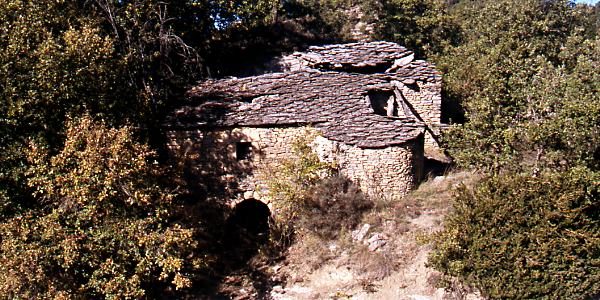
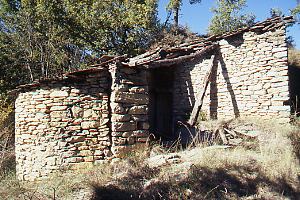
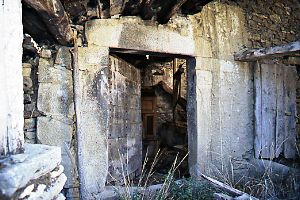
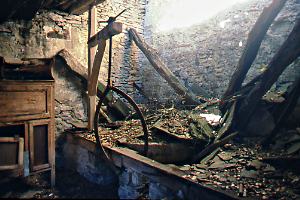
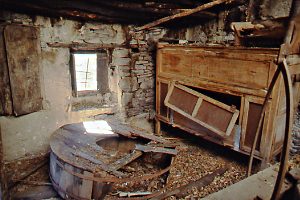

Lost between the rubbish lay some forgotten meal paddles (8). They were used to move the meal and pour it into a sack. Notice that they only have a single thumb hole; there is no long hole for the fingers like we've found in Almunias de Rodellar. Paddles were often made on-site and that may explain why not all are similar.
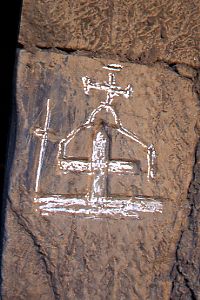
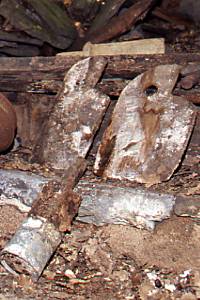
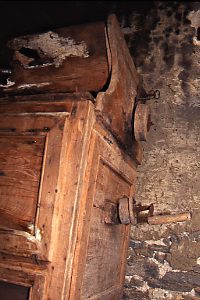
A bolting machine is a tool used to split the flour into three fractions: la primera or cabezuela blanca (very fine), segunda or cabezuela gris (fine) and tercera or moyuelos (coarse) corresponding with the three valves shown in pict. 10. The finer fractions could be processed again in order to obtain more types of meal.
The prism is lined with gauze with a different mesh for each section. Small mallets of wood inside the prism kept the flour off lumping while the crank was turned. Eventually the fractions were captured in small recipients placed below the valves.
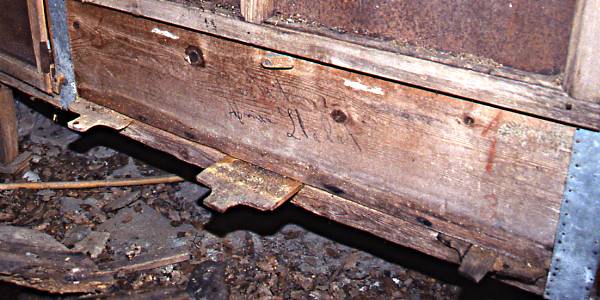
| workplace | waterworks | village mill |